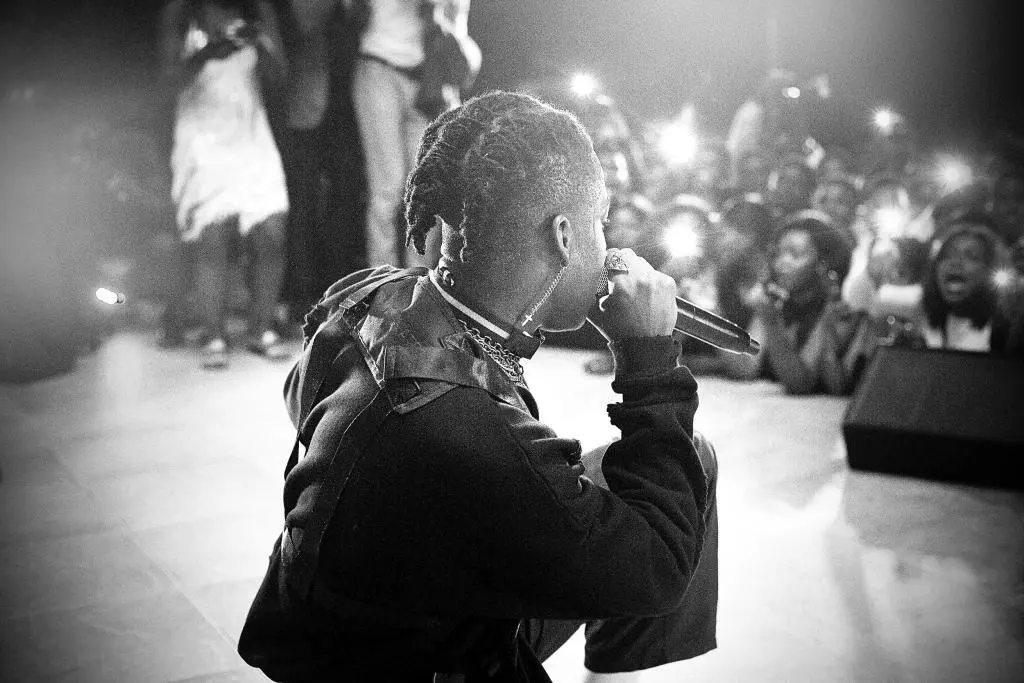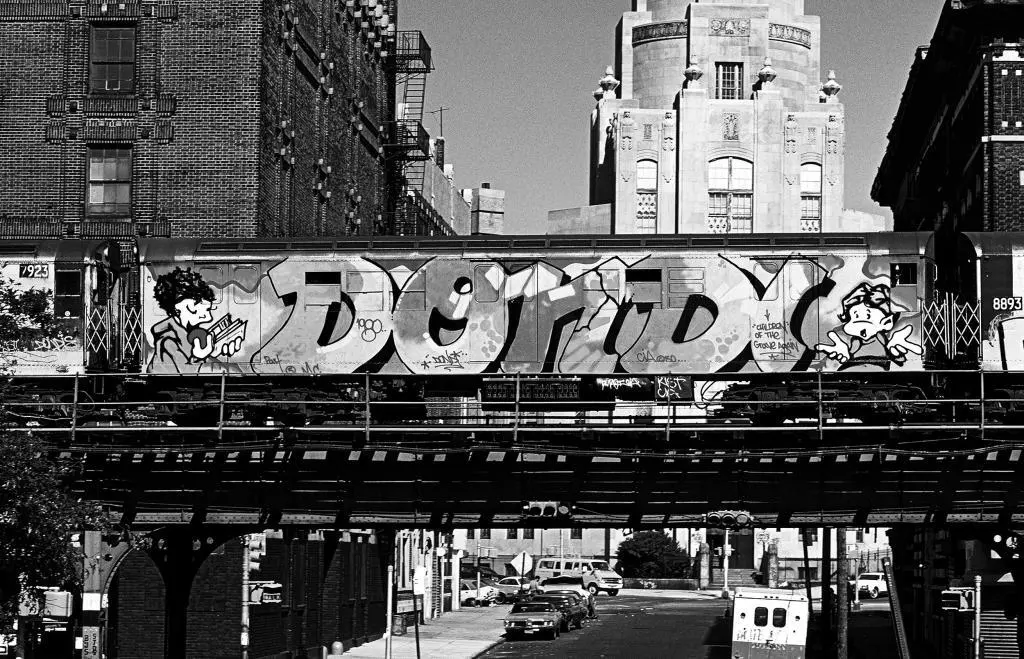MC in rap refers to a “Master of Ceremonies” who not only performs hip-hop lyrics over a beat but also engages and energizes the audience, ensuring a cohesive flow during a musical event or performance.

What is MC in Rap: Table of Contents
Rap, a genre renowned for its fiery beats, compelling lyrics, and rhythmic melodies, boasts of myriad terminologies that anchor its vast culture. Among these, the term “MC” stands out not only for its historical significance but also for the weight it carries in contemporary hip-hop circles. But what does it mean to be an MC in rap? And why has this title evolved to become one of the most coveted labels for artists in this genre?
At its core, “MC” – an abbreviation for “Master of Ceremonies” – has traditionally signified the individual who takes charge of events, guiding attendees through proceedings and ensuring a seamless flow. However, in the world of rap, this term has transformed, taken on layers of meaning, and become a symbol of mastery, respect, and authenticity. An MC is more than just an artist who can rhyme words; they’re a storyteller, a poet, and often, the voice of a generation.
This article delves into the profound journey of the term “MC”, tracing its roots, understanding its evolution, and exploring its importance in the ever-evolving world of rap. Whether you’re a seasoned music producer, an aspiring rapper, or just someone intrigued by hip-hop culture, understanding the essence of an MC is crucial to appreciating the rich tapestry of rap music.
The Historical Roots and Origins of the MC
Before diving into the world of beats, bars, and bass, let’s rewind a little and uncover the original meaning behind the title “MC”. How did a term synonymous with formal gatherings transform into one representing the lyrical maestros of the rap world?
What Did “MC” Originally Stand For?
In its initial incarnation, “MC” stood for “Master of Ceremonies”. Picture a grand ballroom, an official gathering, or even a wedding reception. The MC was the glue holding the event together. Their voice guided attendees through each segment, introduced speakers or performers, and maintained the event’s flow. They were the orchestrators, ensuring the occasion proceeded without a hitch, all the while keeping the audience engaged and informed. In essence, they were the linchpin of the traditional event scene.
How Did the MC Migrate from Ballrooms to Block Parties?
As the 20th century progressed, the world of music underwent numerous metamorphoses, one of the most significant being the rise of rap culture. By the 1970s, especially in the bustling boroughs of New York City, a new kind of MC began to emerge. This wasn’t the MC of formal soirées; this was an artist with a microphone and a message.
In the urban landscapes of this era, rap was more than just music; it was an expressive outlet, a voice for the voiceless, and a platform for social commentary. As block parties and underground gatherings grew in popularity, the role of the MC was to rap or speak rhythmically over beats, often crafted by a DJ. They weren’t just introducing acts; they were the act. Their mission? To electrify the crowd, make them groove, and set the atmosphere alight with their lyrical prowess.
Was New York City the Nexus for the Evolution of the MC?
Absolutely. The urban scenes of the 1970s, particularly in New York City, played a pivotal role in redefining the MC. Here, amidst the graffiti-laden subways and the sound of vinyl scratching, the MC took on a new meaning. The city that never sleeps witnessed the birth of hip-hop, and with it, the evolution of the MC from mere event hosts to the lyrical legends of the streets. They weren’t just rappers; they were narrators of street tales, weaving stories of their neighborhoods, challenges, and triumphs.

From Bronx Beginnings to Worldwide Waves: How Did the MC’s Role Transform?
Rap, much like the rivers that flow, has its source, and for rap, it was the Bronx. But as rivers flow far and wide, so did rap. As it carved its path across the globe, the role of the MC didn’t just follow—it evolved, adapted, and flourished. But how exactly did this journey from the Bronx’s heartbeats to worldwide stages influence the MC’s role in the rap ecosystem?
Why is the Bronx So Crucial to the MC’s Evolution?
The Bronx, during the 1970s, was more than just a borough; it was the pulsating heart of rap’s inception. Here, in its alleys and streets, the art of rapping over a beat found its voice, and naturally, the MC found a new home. As rap began to spread its wings, moving from this birthplace to other parts of the U.S. and eventually the globe, the MC’s role became more pronounced, complex, and indispensable.
Rap was no longer confined to underground parties or neighborhood jams; it started gracing radios, televisions, and concert stages. This global migration meant that the MC wasn’t just narrating tales of the Bronx—they were now ambassadors of a global movement. Their voice, once a local phenomenon, now had a global audience, and with this larger platform, the significance and responsibility of an MC grew exponentially.
“Mic Controller” or “Microphone Checka”: What’s in a Name?
As the realms of rap expanded, so did the language and lexicon associated with it. The title of MC, once firmly understood as “Master of Ceremonies,” began to be seen under a new, street-smart lens. Enter phrases like “Mic Controller” and “Microphone Checka”. But were these just flashy terms, or did they underscore a deeper meaning?
Absolutely the latter! “Mic Controller” wasn’t just a title—it was a testament to the MC’s prowess, their ability to dominate the stage, control the narrative, and hold the audience in their lyrical grip. It was about authority, power, and presence.
On the other hand, “Microphone Checka” was a nod to the MC’s technical expertise and their adeptness at ensuring everything was pitch-perfect before diving into their performance. It emphasized the MC’s dual role: as both an artist and a technician, ensuring that their message wasn’t just heard, but felt.

Is Every Rapper an MC? Unraveling the Layers
To the untrained ear, it might seem that every individual rapping to a beat is an MC. However, delving deeper into the artistic landscape of hip-hop, one quickly discerns the nuances that distinguish an MC from your average rapper. So, what makes an MC stand out in the vast universe of rap?
Why is an MC More Than Just a Rapper?
At its core, rap is rhythm and poetry. While rappers often get accolades for their ability to deliver lines with precision over beats, an MC elevates this art form. An MC isn’t just a performer; they’re a storyteller, a poet, a commentator, and often, a reflection of society’s conscience.
Through their lyrics, MCs weave tales that span personal experiences, societal observations, and reflections on their environments. They don’t just deliver lines; they paint pictures, craft narratives, and provoke thought. Their songs are layered with meaning, peppered with metaphors, and carry undertones that often require multiple listens to fully grasp.
How Do MCs Address the World Around Them?
MCs have historically been the voices of the voiceless, using their platform to address issues ranging from racial inequality, poverty, and political injustices to personal tales of love, loss, and ambition. Through their verses, they’ve shed light on dark corners of society, given hope to the despondent, and provided solace to those grappling with personal demons.
Their approach to societal commentary isn’t just about pointing out flaws. It’s about understanding, dissecting, and proposing solutions or perspectives. They invite listeners to view the world through their eyes, challenging norms and questioning the status quo.
The Craft: Flow, Lyricism, and Stage Presence
An MC’s prowess isn’t solely determined by their ability to craft meaningful lyrics. It’s a melange of flow, lyricism, and stage presence. But how do these elements coalesce, and why are they paramount in defining an MC’s stature?
Why is Flow More Than Just Rhythm?
Flow isn’t just about rhythmically aligning words to beats. It’s about seamlessly blending emotion, tone, and narrative into a captivating sonic experience. An MC’s flow can be their signature, a distinctive style that sets them apart. It’s in how they stress certain syllables, elongate phrases, or experiment with pacing—all to enhance the emotive quotient of their narrative.
Lyricism: Are Words the MC’s Canvas?
Certainly! An MC’s lyricism is akin to a painter’s strokes on canvas. Through words, they sketch images, evoke emotions, and transport listeners to different realms. Their verses are intricate mazes of metaphors, allegories, and double entendres, urging listeners to delve deeper and uncover layered meanings.
Does Stage Presence Define an MC’s Legacy?
Historically, rap battles have been the proving grounds for MCs. In these arenas, stage presence isn’t just about delivering lines—it’s about dominance, charisma, and connecting with the audience. An MC’s ability to command a stage, engage with listeners, and exude confidence can elevate their status from a mere performer to a legend.
While raw talent is essential, the energy an MC radiates, their body language, and their ability to make each audience member feel seen and heard underscore their greatness. After all, rap, at its heart, is a communal experience, and an MC’s stage presence solidifies that bond with the audience.
MCs in Popular Culture
Across the musical spectrum, titles and labels often play a pivotal role in distinguishing artists and their roles. In rap culture, few titles carry the weight and historical heft of “MC.” But what’s behind this two-letter acronym that makes it resonate so deeply with fans and artists alike?
How Have Artists Like MC Hammer and Young MC Shaped the MC Legacy?
The era of the late 80s and early 90s was rife with groundbreaking music, with rap and hip-hop becoming dominant forces in the industry. Among the luminaries of this era were artists who not only rapped but wore their “MC” title like a badge of honor.
- MC Hammer: Beyond the catchy hooks and iconic dance moves, MC Hammer was a trailblazer. His mainstream appeal did more than produce chart-topping hits; it bridged the gap between hardcore rap enthusiasts and the general public, solidifying rap’s place in popular culture.
- Young MC: With hits like “Bust a Move,” Young MC cemented his place as a master storyteller. His witty lyricism combined with an uncanny ability to craft relatable narratives set him apart in an industry teeming with talent.
- MC Ren: As a part of the influential group N.W.A., MC Ren’s contributions to rap are undeniable. He played a vital role in the ascent of West Coast hip-hop and the raw, unfiltered narratives of gangsta rap.
Distinguishing Between MC and Rapper
At the surface level, many might assume that an “MC” and a “rapper” are one and the same. Both dominate stages with lyrical prowess, command the mic, and have a unique way of connecting with their audience. However, dig a little deeper into the world of hip-hop, and it’s clear that while all MCs are rappers, not all rappers are necessarily MCs.
What Sets an MC Apart in the Modern Rap Landscape?
Historically, an MC, or “Master of Ceremonies,” had the role of engaging the crowd, often at parties or gatherings. They were the ones who would introduce the DJ, keep the energy high, and, most importantly, master the art of the ceremony they were a part of. Over time, as rap evolved, this role began to intertwine with the act of rapping itself.
However, an MC’s primary distinction lies in their profound connection with the crowd, their storytelling abilities, and their deep-rooted understanding of hip-hop culture. An MC is seen as someone who doesn’t just rap lyrics but feels them, lives them, and communicates them in a way that resonates deeply with their audience. They’re often lauded for their ability to freestyle, battle, and think on their feet – a true master of the ceremonial aspects of hip-hop.
Has Commercialization Dimmed the MC’s Glow?
In today’s hyper-commercialized music landscape, where streaming numbers and viral moments often dictate success, there’s a growing debate about the MC’s place. The push for catchy hooks, brand endorsements, and chart-topping singles has, in some ways, overshadowed the raw, unfiltered essence of what it means to be an MC.
Many argue that this commercial push has muddled the lines between being an MC and a rapper. With record labels and marketing teams often prioritizing virality over authenticity, the art of mastering ceremonies, engaging crowds authentically, and delivering profound lyrical content might sometimes take a backseat.
However, the heart of hip-hop still beats strong with purists and true aficionados recognizing and valuing the distinction. Even in this commercial age, the role of an MC stands firm, a testament to the undying spirit of authentic hip-hop and the respect for its roots.
MC’s Contribution to Other Art Forms and Societal Narratives
The world of rhythm and poetry extends beyond the realm of hip-hop, touching the shores of other poetic expressions, most notably slam poetry. But how closely linked is the art of an MC to that of a slam poet?
MCing and slam poetry, at their core, are both rhythmic spoken art forms that prioritize the power of words, cadence, and a connection with the audience. While MCs may ride the beat of a song, slam poets ride the rhythm of their emotions and the pulse of their narratives. Both art forms require a certain vulnerability, a willingness to share personal stories, societal observations, or even political commentaries in a public forum.
Furthermore, the arenas where MC battles and slam poetry contests occur share an electrifying atmosphere. Participants feed off the energy of the audience and their competitors, pushing their lyrical and performance boundaries. It’s in these spaces that the lines between MCing and slam poetry blur, with both artists using words as their primary tool for expression, challenge, and change.
MCs: More Than Just Entertainers; They’re Cultural Commentators and Activists
In the tapestry of hip-hop, MCs are often seen as the threads that weave stories of societal struggles, triumphs, and observations. But their influence doesn’t stop at creating hit tracks or moving the crowd at a concert. MCs, with their platform and influence, have taken on roles far greater than just music creators.
From the early days of hip-hop, MCs like Grandmaster Flash with “The Message” or Public Enemy with “Fight the Power” have used their verses to shed light on issues plaguing their communities, be it police brutality, systemic racism, or socio-economic disparities. Their rhymes became anthems for movements, giving voice to the voiceless and driving change.
Today, this legacy continues with MCs worldwide, highlighting global issues from climate change to political corruption, human rights abuses, and beyond. Their verses, often laden with metaphors and sharp commentary, serve as a mirror to society, reflecting its imperfections, challenges, and hopes.
Moreover, MCs’ influence spills over to grassroots activism. Many have set up foundations, led community initiatives, or used their platform to rally their fans for a cause, proving that their art is not just for entertainment but for enlightenment and empowerment.

